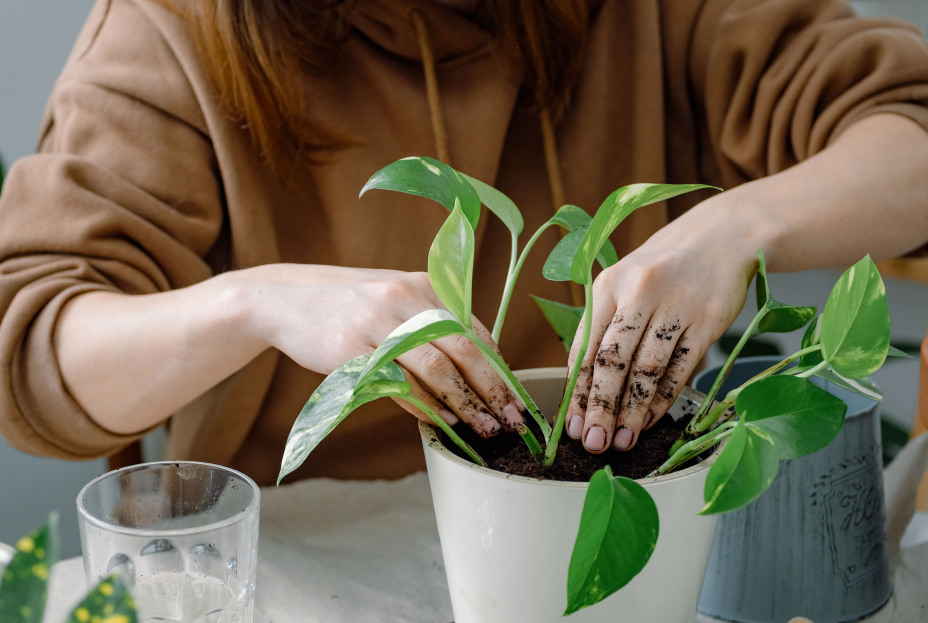
Becoming a new plant owner can be an awesome experience. A lot of new plant owners think plant care is complex, time-consuming, or difficult to keep up with. Indoor plant care is actually easier than you may think.
Plants require consistency, basic knowledge of their needs, and the most important thing - patience. Follow the below plant care tips to keep your houseplants looking and feeling healthy.
The best way to gain knowledge about plant care is by familiarizing yourself with your plant. Learn about where its native habitat is. what it prefers in terms of lighting, frequency of watering, humidity, temperature, and fertilization. And to adjust your care based on how the plant looks, feels, and acts.
Some plant types require minimal attention and don't need to be monitored regularly. Cacti and Succulents are known to be a part of this family of easy-to-care-for plants. Let your plants grow themselves and enjoy the positive outcome that they bring to your space.
Other plant types can require a little bit more TLC than others. Most Tropicals are in this category. Some of these plants require regular misting to boost their humidity levels. Some plants are sensitive to chemicals and salts in tap water, and others just need the moisture in their soil to maintain their healthy appearance.
A key factor in determining a plant's longevity is ensuring that your plant doesn't receive too much water but is also not given too much water either. a rule of thumb with almost all plants is to feel the top few inches of soil in your plant's pot. If the top 2- 3 inches are dry and non-moist then it's time to give your plant some water.
Underwatering - Underwatering issues can occur when the plant's soil is exposed to long periods of drought or when it is not watered properly.
Overwatering- Overwatering can also cause the early death of your plant. When plants are given excessive amounts of water or water sitting inside of their pot around the roots then your plant can start to root rot. Which will quickly cause your plants to droop over, shrivel up or die.
It is important to ensure that there is no water coming from the drainage holes in the bottom of your pot before placing it back into its container. When water sits in the bottom of your pot your plant will more than likely develop root rot.
Placing your plant in a location does not have to be permanent or a one size fits all location. Each plant requires a different amount of light intensity, direct vs indirect sunlight proper humidity to keep them healthy.
Light - Some houseplants such as Succulents, cacti, and others are fairly low maintenance and can adapt and thrive in light environments from low to bright, indirect light. Other plants like the ZZ plant are known to be divas and can require longer periods of indirect sunlight to maintain their growth and health.
Temperature - Temperature can play a big role in a houseplant's health. Tropical plants such as the Crocodile Fern are native to very hot and humid areas. Any draft of cold air from a vent, AC, or other sources can put this plant into an unhealthy state and cause the quick death of the plant
Humidity - Before bringing your houseplants inside it is important to take into account that these plants spent their first few months of growth in a humid greenhouse. Compared to a greenhouse environment most holmes are on the dry side of the humidity scale. For this reason, it is important to practice and maintain appropriate humidity for your houseplants
Any of the above tips can be subject to your location where your plants are. It is important to learn and adapt from any issues or mistakes that arise during the start of your plant ownership journey.
No matter what you grow and despite all the TLC that you provide to your plants, they can still become infested with insects or mites. A few bugs won't do much harm but if left untreated they can multiply and turn your houseplant into a bug infestation zone or even kill it.
Pests - Some common issues you may encounter with your plants may be Fungus Gnats, spider mites, or aphids.
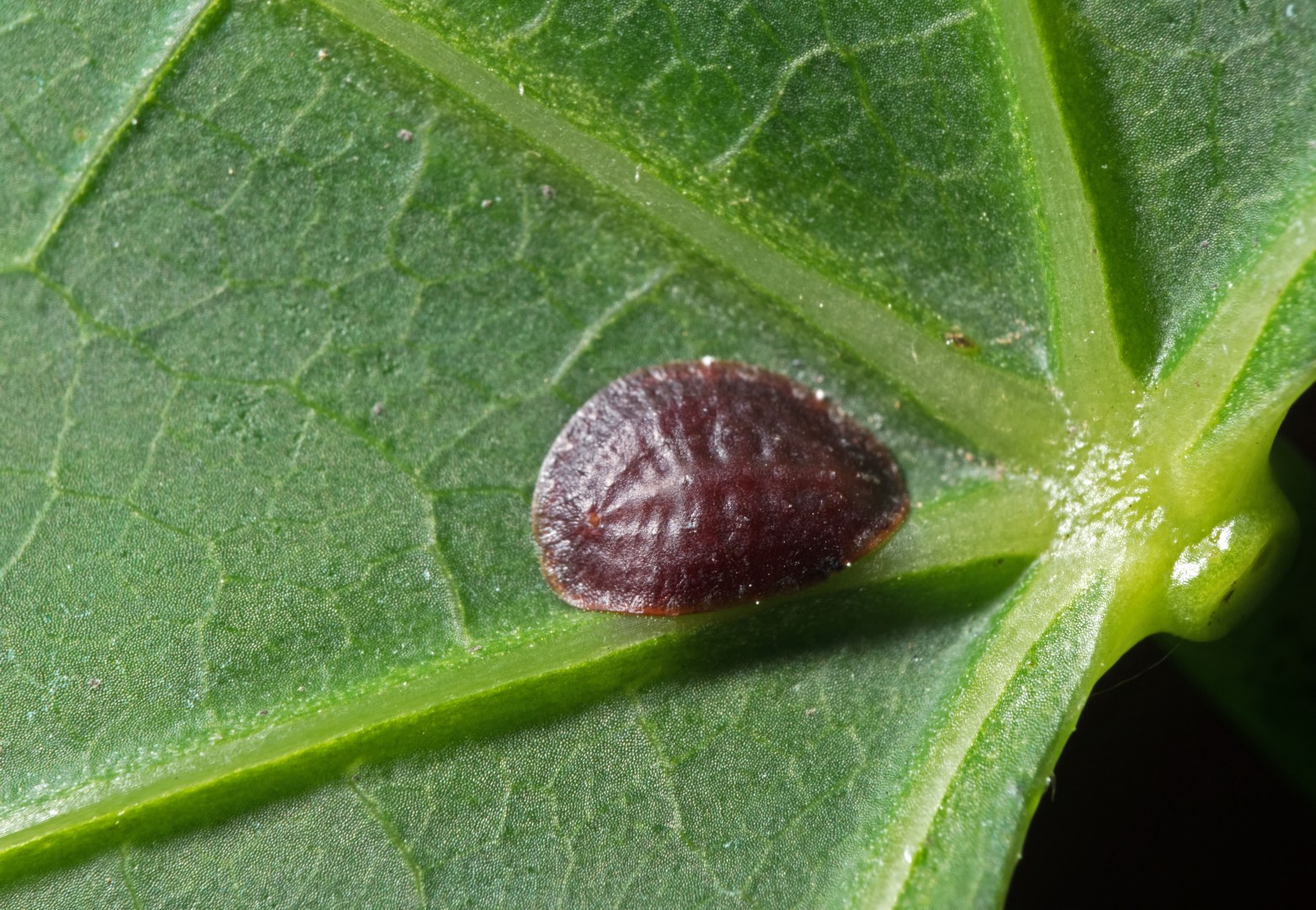
Scales - Scales are small insects that live on a plant and suck away its plant sap. Tiny scales in their immature stage move as they feed. Adults are known to cover themselves in a waxy protective coating to stay put.
Scales are most commonly found on the underside of leaves and on stems, although they do occasionally appear on the upper leaf surface too. Although scales can feed on lots of different types of houseplants, they are particularly interested in figs, ivy, and citrus trees.
An easy fix for scales is to buy and use a plant insecticidal soap or neem oil. Adults can be harder to remove because of their waxy exterior coating. Scrape them off gently and monitor your plant daily to ensure the infestation does not re-spread.
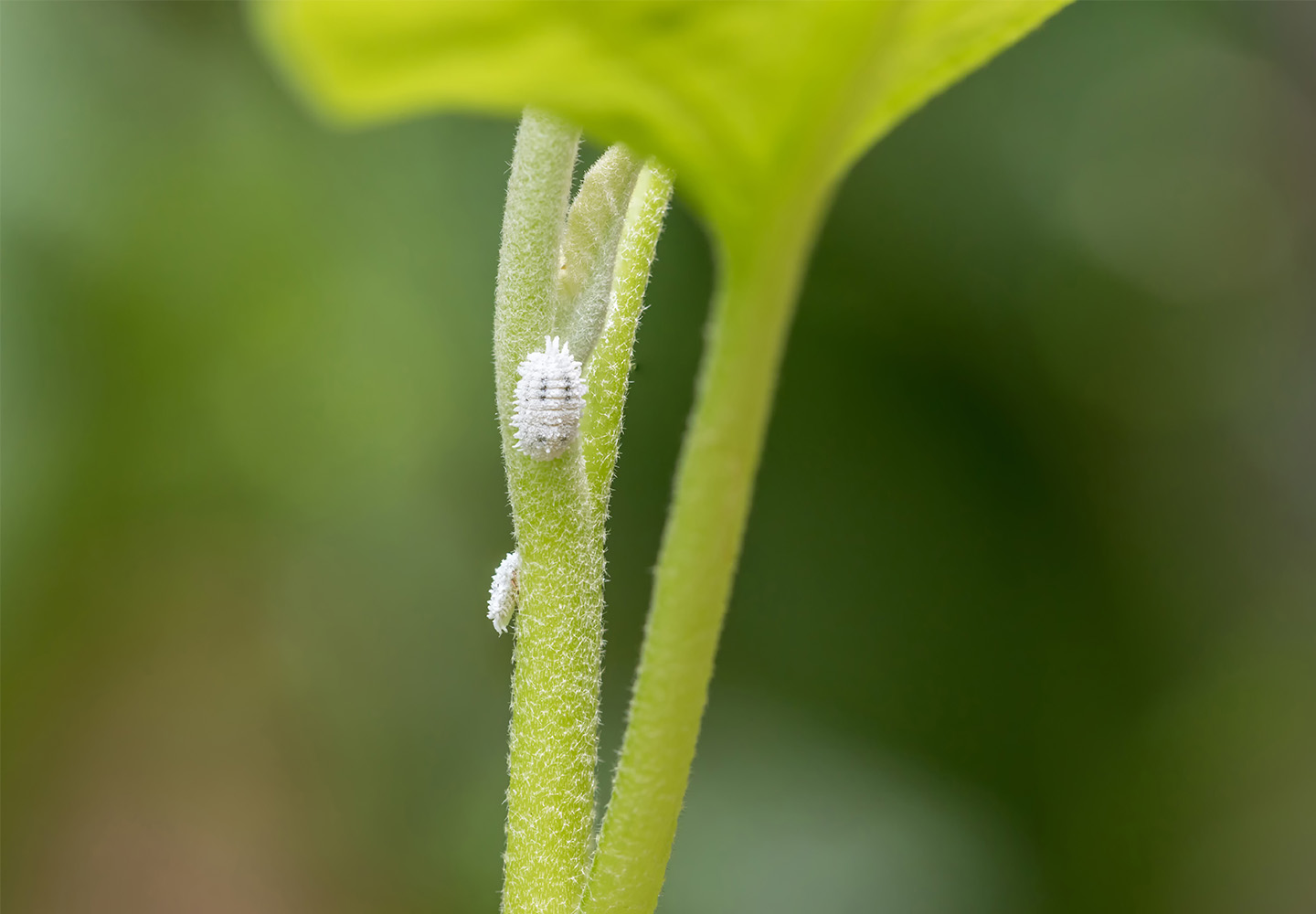
Mealybugs – Similar to scales, mealybugs feed off sap as well and have a protective waxy coating around them. Signs of a scale or mealybug infestation can be seen by the presence of waxy deposits on the plant itself. Black spots or mold will grow off the honeydew that these insects produce and will sometimes turn the leaves yellow or make them die. This can also stunt plant growth due to this.
Using a cotton ball or swab dipped in rubbing alcohol can help make removing these mealybugs easier. For larger sturdy plants you can wash the leaves off with a strong spray of water to dislodge these pests from your plant and its leaves. Insecticidal soap and neem oil are also great solutions, especially for bigger infestations.

Spider Mites – Spider Mites are so tiny that they sometimes go unnoticed. They look like dark spots or specks on a plant’s leaves. They start to become more noticeable once white “spider webs” start to form along the stems and leaves in between them. Another sap-sucking pest, spider mites suck sap from the plant and can cause their leaves to discolor and droop.
Among the pests listed, spider mites are tougher to control. If your plant becomes or is heavily infested, it is best to address this issue immediately before it spreads. For spider mites, scales and mealybugs it is best to catch the problem early and inspect your plant regularly.
You can use insecticidal soap to remove these pests or wash them off to remove the spider mites and their webs. Increasing the humidity of the plant can also help limit how quick the spider mites spread and build-up
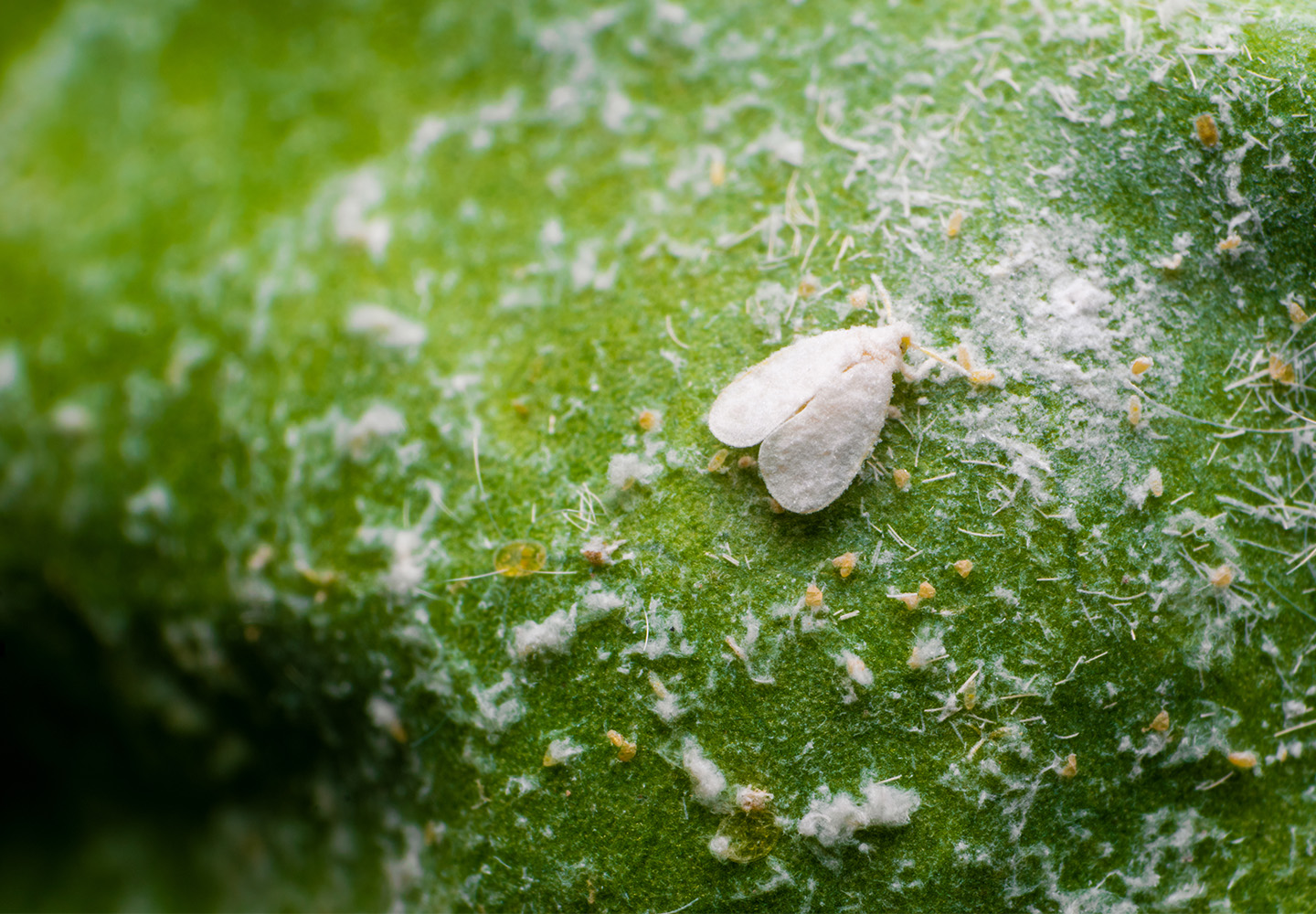
Whiteflies – These tiny winged insects have a white powdery appearance to them. There are 2 main stages of these insects – Immature and Matured White flies. Immature white flies are the ones that do the most damage.
They feed on the undersides of the leaves and suck sap from the plant. Causing the infested leaves to turn yellow and/or die. Mature Whiteflies don’t do as much damage but are the ones who flutter around and spread to various parts of the plant.
The best way to attack this infestation is to get rid of whiteflies with Insecticidal soap or neem oil. Be sure to apply to the underside of the leaves as this is where most to all of the immature stage whiteflies will be. Treatment will have to be done weekly and regularly to ensure the proper removal of these insects

Aphids – Aphids are another sap-sucking insect that also produces honeydew. They have a short life cycle so their populations can increase quite rapidly. They tend to feed off new, tender growth where they attack and cause wilting, and yellowing of plant leaves.
A strong stream of water can dislodge most aphids off your plant. Take your plant outside to hose it off gently or you can even use your showerhead sprayer to do so as well. Insecticidal soaps or neem oil can help too.
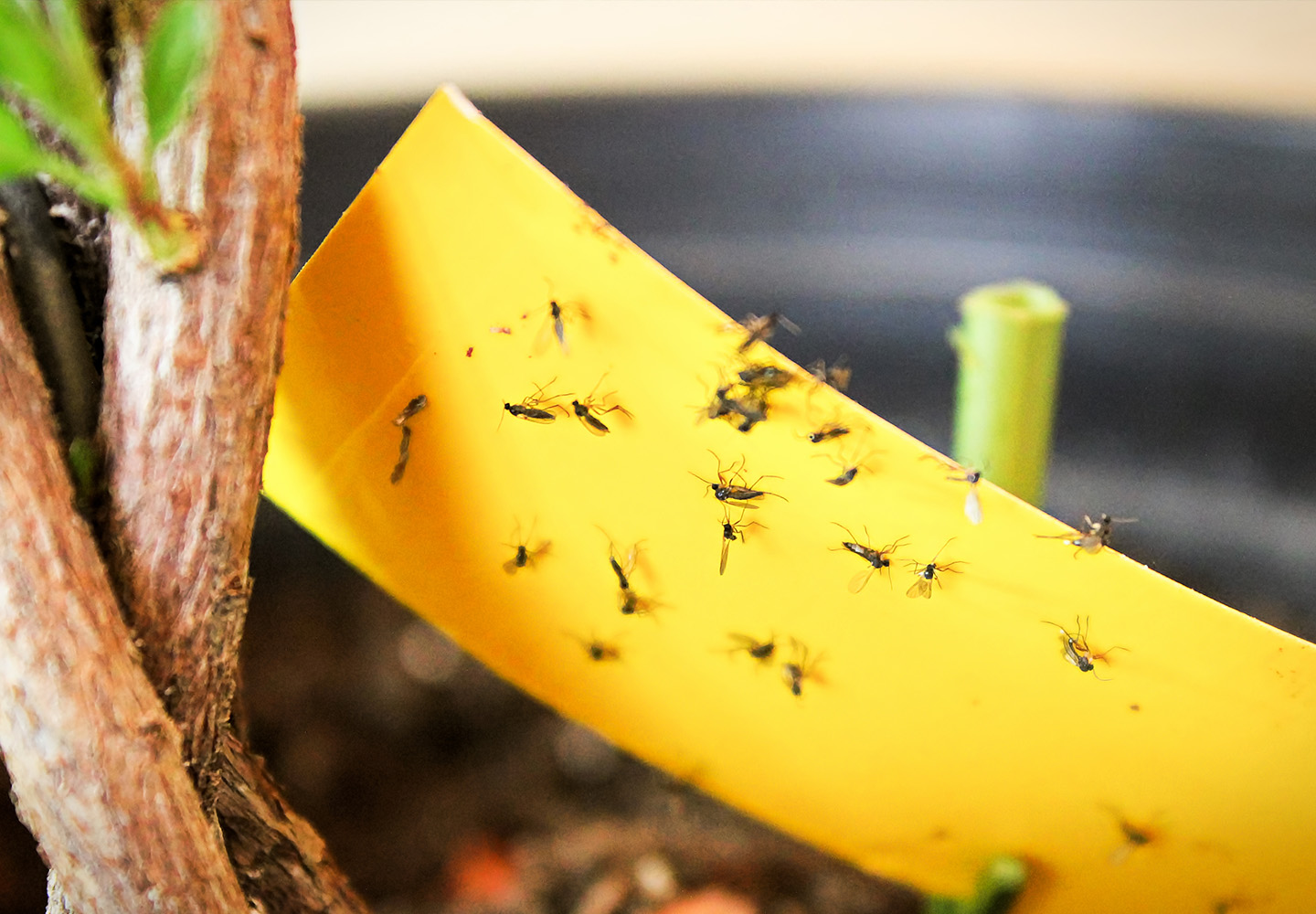
Fungal gnats – These tiny fungal gnats are known to be more of a nuisance than a pest, but can still cause damage and affect your plant's overall growth. In their immature stages, they feed off the plant's roots and cause growth problems, especially in young fresh plants. Fungal Gnats are noted to be present as a symptom of overwatering.
A Tip to reduce these fungal gnats is to ensure a proper watering routine. Do not overwater your plant and do not let water sit in the bottom of its container. Yellow sticky traps are used to help capture these insects as well
The best way to turn yourself into a beginner green thumb is to sign up for our newsletter. Ths helps you stay up to date on the latest tips and plant care best practices. https://www.livinghouse.ca/news